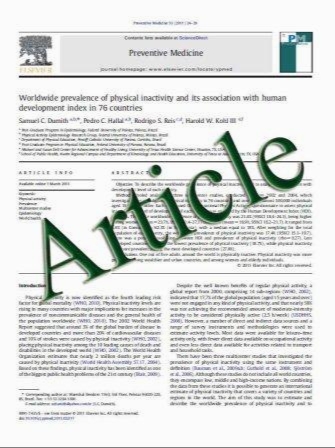Bone loss and impaired fracture healing in spinal cord injured mice
- نوع فایل : کتاب
- زبان : انگلیسی
- مؤلف : W.-G. Ding & S.-D. Jiang & Y.-H. Zhang & L.-S. Jiang & L.-Y. Dai
- چاپ و سال / کشور: 2010
Description
Summary Spinal cord injury (SCI) results in impaired fracture healing in mice while leading to significant bone loss. Poor fracture healing following SCI is consistent with significant bone loss. Introduction SCI leads to significant bone loss in sublesional limbs, but there is few data concerning the relationship between fracture healing and bone loss following SCI. This study was undertaken to investigate the effect of SCI on fracture healing using a mouse femur fracture model. Methods One hundred twenty male C57BL/6J mice were randomly divided into SCI and control groups (n=60, respectively). A femoral shaft fracture was generated and fixed with intramedullary pins 3 weeks after SCI. Fracture healing was evaluated by micro-computed tomography (micro-CT) for callus formation and mineralization and neovascularization, and bone mineral density (BMD) was measured by DXA at 1, 2, and 4 weeks after fracture. Serum vascular endothelial growth factor (VEGF), osteocalcin, and alkaline phosphatase (ALP) were assessed using ELISA at each time point. Biomechanical testing was performed at 2 and 4 weeks. Results BMD in SCI mice was significantly lower compared to control mice at each time point, with callus volume and all vessel parameters reduced as measured by micro- CT. Ultimate stress of the femora was significantly lower in SCI mice than in control mice at 2 and 4 weeks after fracture, whereas Young's modulus between the SCI and control mice turned to be significantly different at 4 weeks. Serum VEGF was lower in SCI mice than in the control group at 2 and 4 weeks, whereas serum osteocalcin and ALP were lower in SCI mice than in control ones at each time point. Conclusion Significant bone loss and fracture healing impairment was noted in SCI mice. Decreased angiogenesis is consistent with the changes of microarchitecture and biomechanical properties during fracture healing.
Osteoporos Int (2011) 22:507–515 DOI 10.1007/s00198-010-1256-8 Received: 19 October 2009 / Accepted: 29 March 2010 / Published online: 6 May 2010


